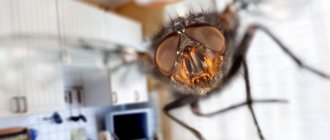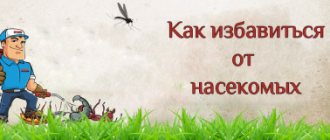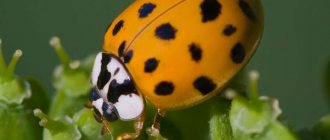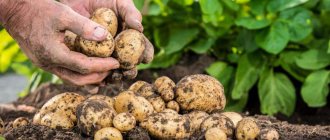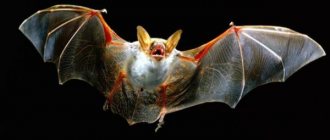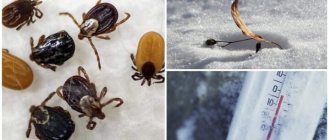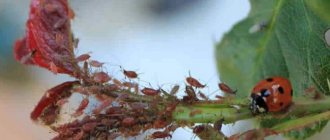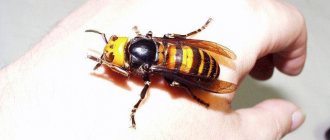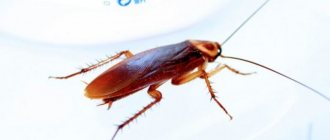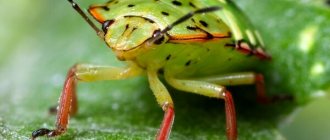Variety of species
The wasps that are familiar to most of us and have yellow and black stripes on their bodies are called paper wasps.
This species name is due to the fact that the material from which insects build their homes is very similar to paper. It is made from wood fibers chewed by arthropods, which are glued together with saliva. Other types of wasps have different colors. The size of the insect depends on its species. They range from 1.5 cm to 10 cm. What do wasps eat? The adult eats mainly liquid food - nectar, fruit juice. For their larvae, wasps get: flies and other insects. Predatory wasps themselves eat insects, and can also feed on other types of food.
The wasp catches its prey and injects its poison into it through its sting, which does not kill, but only paralyzes. Thus, the meat of the prey is kept fresh until the time of the meal.
Different types of wasps live almost everywhere. For example, ground wasps choose soil to build their “homes”. Paper wasps build their “family nest” under a tree branch or on any structure. It should be noted that wasps are very willing to settle near people. This proximity makes it much easier for them to find food. The wasp eats sweets and other foods left in a visible place in a person’s home. But also, it catches pests there such as flies, which carry various infections and thereby brings benefits. In the garden, wasps can find not only flies and ants, but also a huge number of insects that are pests. Wasps love honey very much and therefore pose a threat to bees.
The queen is the largest individual of the paper wasp family. The length of its body is approximately 20 millimeters, while the body length of a working wasp or drone is about 18 millimeters. Females have a larger abdomen than males. Insects do not differ in body color by gender. Males and females have the same yellow and black striped color.
Reproduction
The future queen builds a honeycomb, in the cells of which she lays eggs. After a few days, carnivorous larvae appear, demanding meat food. During this period, the female is actively engaged in the destruction of tree pests; they serve as food for the growing larvae. The first wasps are sterile females and will assist the queen in caring for the next generation and building the nest.
In August and September, young queens and males will appear ready to mate for reproduction. After fertilization of females, most males die. Old queens that have lost the ability to lay eggs will not survive the second winter. They will die along with the workers. Among the many species of paper wasps, there are females whose life cycle is 2-4 years. They enter a state of winter sleep several times.
Information. What do wasps eat in winter? Before the onset of cold weather, females try to accumulate more nutrients in the body. After entering diapause, they become so passive that they survive the winter due to accumulated substances.
Birth and nest construction
Wasps are not noticeable in winter and early spring, but with the onset of stable warmth, the first scouts fly out. These are future queens who, since last autumn, have been storing in their bodies the sperm of the males who fertilized them. Insects look for the first flowers to feed on nectar. The young female will have to fulfill the main function of her life - to give birth to a new family. She finds a suitable place and begins building a nest. The material is chewed tree bark, generously moistened with saliva. After drying, the substance becomes like thick paper.
Medicine from a wasp's nest
But the efforts of hardworking bees are not in vain; a knowledgeable person, having discovered an empty wasp nest, will definitely take it with him. For what? To prepare medicine. Yes, that’s right, a wasp’s nest can be of great benefit. It, or rather, drugs based on it, are quite actively used in folk medicine to treat various diseases. For example, if you compress several of these nests (empty, of course, without insects), put them in a jar and fill them with alcohol, then after two weeks of infusion you can get a highly effective remedy that helps in the following situations:
- for joint pain;
- for pain in the spine;
- for arthritis;
- for inflammation of joint tissue;
- for various forms of viral influenza;
- for bronchial asthma.
The infusion helps to eliminate the problems described above when applied externally - in the form of rubbing. As for its internal use, it shows very good results in the treatment of inflammatory processes occurring in the gastrointestinal tract, in diseases of the respiratory tract and pneumonia. In such situations, 15 drops of infusion are diluted in 50 ml of water and taken three times a day.
The second way to use wasp nest is in powder form. This simple one-component drug heals burns, cuts and other damage to the skin well. Moreover, it not only stimulates tissue regeneration, but also disinfects the affected area. Powder made from crushed wasp houses can also solve the problem of periodontal disease. It copes well with sweating feet and eliminates unpleasant odor.
You can store preparations from wasp nests for several years and their strength will not decrease.
Main distinguishing feature
The life of a wasp depends on whether it is a social or solitary individual. Already from the name it becomes clear that the former live in families, and the latter – separately. This division exists in all numerous insect species. Each single individual has the opportunity to reproduce. In the family, only the uterus continues the family line.
Solitary wasps prefer not to live in large groups. They mate and then lead a solitary life. Paper single females build their nest. In each cell, in addition to the laid egg, the female places a supply of food for the impoverished larva. These are small insects and spiders paralyzed by poison. Having filled the cell, the female seals it.
The larva eats the supplies prepared by the caring mother and develops inside the cell. When it reaches maturity, it gets out of the nest on its own. Young insects fly away in search of a place to build their own “home”.
Aggressive insect
The peculiarity of the structure of the ridge allows the head to move very well. The mouthparts of an insect are of the gnawing type. It is designed to grind food and wood fibers used in the construction of honeycombs. Stripes have a serrated sting, which does not have a knot at the end, but the serrations are smaller than those of a bee.
Only females have a sting. After all, in essence, it is an ovipositor, through which, if danger arises, the “minke whale” can also spray poison. But wasps are quite aggressive and prefer to attack first. Females quite often use the sting for purposes other than its intended purpose.
All the nuances of appearance
The wasp belongs to the order of Hymenoptera insects, the suborder of stalked bellies.
The description of the structure of the insect allows it to be classified:
- The body consists of three clearly distinguishable segments - the head, thorax and abdomen, which are supported by a strong external chitinous skeleton.
- Between the chest and abdomen the insect has a long thin stalk, reminiscent of a narrow “waist”. It is this feature of the waist that defines the suborder. This structure allows the wasps to almost fold their body in half, and also sting the “enemy” from any angle. That is why, in fights with a larger opponent, these insects emerge victorious.
- The abdomen of the arthropod is covered with villi and has the shape of either a spindle or a barrel.
The question: how many eyes does a wasp have is not trivially simple. The striped insect, unlike the fly, is very “big-eyed” - the total number is five. On the sides of the head there are two large eyes of the wasp, protruding down beyond the plane of the stigma.
They have a very complex structure - they consist of a huge number of facets. As a result, the arthropod can look in different directions at the same time. At the very top of the head there are three more eyes. The upper part of the head is also decorated with a pair of antennae.
This organ is very multifunctional:
- perceives air vibrations;
- responsible for the sense of smell;
- is an organ of touch;
- has taste buds.
In addition, the wasp uses antennas as a measuring tool. When building a nest, she measures each cell with them. On the back of the wasp there are two pairs of membranous wings, which are fastened together. Therefore, visually, it seems that the insect has only one pair of wings. True, some types of wasps do not have wings at all.
Aggressive insect
The peculiarity of the structure of the ridge allows the head to move very well. The mouthparts of an insect are of the gnawing type. It is designed to grind food and wood fibers used in the construction of honeycombs. Stripes have a serrated sting, which does not have a knot at the end, but the serrations are smaller than those of a bee.
Only females have a sting. After all, in essence, it is an ovipositor, through which, if danger arises, the “minke whale” can also spray poison. But wasps are quite aggressive and prefer to attack first. Females quite often use the sting for purposes other than its intended purpose.
Nature dictates that the bright yellow-black color makes the insect very noticeable and thereby warns other animals that its owner is poisonous. The minke whale stings and bites its opponent. Although the bites are less painful than the venom released by the stinger.
It should be borne in mind that minke whales attack at the slightest disturbance - this demonstrates how dangerous they are to their enemies. When biting, it does not leave a sting in the body of its “victim”, as bees do. Therefore, insects do not die after being stung. They may repeat the attack again.
It is very important to know that the venom of the striped insect has a smell. If one wasp stung and another was nearby, it will smell the poison and fly to the aid of its “relative.”
It is especially dangerous to disturb a formidable arthropod near its home. Then the whole family can attack. It’s not for nothing that there is a saying “to stir up a hornet’s nest,” which implies major troubles.
Winter houses for wasps
As soon as the first cold weather sets in, summer residents calmly remove and burn wasp nests. They know very well: the insects have already flown away. In fact, the destruction of empty nests only has a certain preventive role. The fact is that wasps like to nest where there are already other wasp nests nearby. And it’s better to get rid of the old nest: suddenly the wasps won’t come again!
Before wintering, females actively mate, and then fly away in search of a suitable place for wintering. What attracts insects, and where do wasps usually hibernate? They love fallen trees. Rotting stumps also become a home for wasps. If a good litter has been formed from fallen autumn leaves, insects will definitely live in it and stay there until spring.
Females, for the most part, look for cracks in the bark and climb into them. If there are a lot of cracks in your country house, then insects can get into them and stay there until the first warm days. The main thing is that wasps do not end up on the inside of your house. Any wooden buildings, especially old barns, can become an “apartment” for insects. And you need to be prepared for this.
There should not be large temperature differences where wasps hibernate. When there is a harsh winter or, conversely, little snow, many females die. Even before they have time to recover from hibernation, wasps become desirable prey for birds, which cannot help but take advantage of the arrival of winter thaws. But, naturally, some insects remain alive. And the new generation appears quite quickly, which in any case has a positive effect on the population.
Wintering places
In the summer, wasps can be found almost everywhere in nature. Before the fruits ripen, these insects actively eat pests. Their numbers are usually small. However, as the fruits ripen, the number of insects increases.
The first young wasps are sterile females. They help the queen care for the new generation and build a nest. At the end of summer - beginning of autumn, young queens and males mate. With the arrival of cold weather, the nests quickly become empty: most of the male and working individuals die.
And young females choose places that are completely hidden from human eyes as their winter “dwelling.” In most cases, this is the thickness of wood, old stumps and cracks in outbuildings or houses.
Where do wasps spend the winter?
On warm summer days, wasps are found everywhere. Before fruits and berries ripen, they conscientiously destroy various pests in the garden and vegetable garden, without causing inconvenience to anyone. And their number is not very large. When the fruits begin to ripen, the number of these insects becomes significant, and they turn into malicious pests, destroying sweet fruits and berries en masse. If in the spring a wasp's nest is small in size and only a few insects live in it, then by autumn it becomes impressive in size, and the number of individuals in it is already in the hundreds. But the nest is exclusively a summer home for wasps. With the onset of cold weather, these hives become empty. Summer residents who remove and burn nests in late autumn know well that there are no insects in them. These actions play only a preventive role, since in the spring wasps prefer to build a nest where there are already old hives.
Before the onset of cold weather, young females fly away after mating and look for suitable places for wintering. As a rule, their winter “apartments” are rotting stumps and fallen trees, and the forest floor of fallen leaves. Females love to climb through cracks under the bark of trees, into the crevices of buildings and under boards. By the period of hibernation, wasps accumulate specific substances in their cells, similar to antifreeze, which significantly reduce the freezing temperature and prevent the destruction of body cells. After finding a suitable shelter, females enter diapause (hibernation). For a safe winter, it is very important that there are no significant temperature changes in the shelter. In harsh winters with little snow, many insects die. Winter thaws are also detrimental to wasps. A significant number of wintering females become prey for birds and small predators. Nevertheless, some insects survive safely until spring.
Working wasps and old females also leave the nest in the fall, but, unlike young females, they do not look for a place to winter, but scatter around the surrounding area and, with the onset of cold weather, become inactive, freeze and die.
In early spring, when the air temperature exceeds 15 degrees, the surviving females will leave their winter shelters and fly to look for suitable places to build nests.
In the fall, you should carry out preventive cleaning on the site - this way you will destroy the “shelters” of wasps that remain to spend the winter in your neighborhood
Where do wasps spend the winter and when do they wake up?
We have already said where wasps spend the winter. But the above did not apply to old females, who are practically no longer able to bear offspring. They do not look for wooden structures, stumps and leaves to survive the winter safely. Old females scatter, as they say, “wherever they look.” And as soon as the temperature drops below zero, they become completely inactive. The result is immediate death. Such is their lot.
But the surviving wasps are waiting for fifteen-degree heat. And, having gained strength, they leave their winter homes. Now the main goal of the wasps is to build a nest. We advise you to get together with all your household members in the fall and carry out preventive cleaning of the area. Believe me, it will not be superfluous. This way you will destroy the “secret hiding places” of insects in the same accumulated foliage.
Looking for a nest
How to get rid of wasps in the house? First, go looking for a nest. And here it is important to become familiar with insects and what guides them in choosing a place for their home. So, they choose areas that are hard to reach and hidden from view. In wildlife, these requirements are perfectly met by hollows and dense tree crowns. If there are such old powerful trees on your site, start with them. If we talk about traditional buildings, then they become an ideal place for arranging wasp nests. We recommend that you pay attention to the following areas during your inspection:
- rarely used household and utility rooms, sheds, garages - pay attention to the areas directly under the ceiling;
- niches under slate;
- cracks and places where the sheathing has moved away from the walls themselves due to age;
- verandas, balconies;
- thickets of bushes and the so-called hedge.
Of course, it is very problematic to go around all the suitable areas and look into every crevice; the search may drag on indefinitely. That is why we recommend using a little trick: place a piece of fish or meat in an open place. If wasps have settled on your site, they will happily begin to flock to the delicacy. Your task is to track the route and their initial point of departure.
Do wasps die in winter?
In the fall, the wasps leave their nest and disappear for several months. If it remains in the same place, the first individuals will begin to return in the spring. They also begin to disappear gradually; young females disappear in October, when the temperature in the Moscow region drops to +10 degrees.
Working females are the first to die. Their life cycle is short, only a year. Before this, at the end of summer, individuals capable of giving birth to offspring mate. Then they fall into suspended animation and fall asleep until spring in order to preserve future offspring during the frost period. By the end of November, male workers die. The old queen falls asleep forever, and in the spring a new individual will take her place. Some families give birth to fertile females only at the end of August, so their cycle is slightly shifted. Even at the end of summer, the life processes inside the wasp’s body begin to slow down until they slow down so much that the insect freezes and goes into hibernation, with fatal consequences.
As a result, only the females who store the eggs survive the winter. In the spring, the swarm will recover and return to its original place of residence. In solitary species of wasps, the queens survive the winter with their offspring inside. Male hornets die in winter, but females hide until warm days arrive and survive. Wasps choose wintering places long before the onset of cold weather.
How do wasps overwinter in nature?
In the fall, as daylight hours decrease and the temperature drops, the wasps begin to seek shelter. The best choice is to dig deeper under the tree bark. It's warmer here and it's harder for birds to get to. Females can hide in old stumps, under a pile of fallen leaves, or hide in the cracks of outbuildings. Insect lovers are wondering – do wasps sleep in winter or not? During the period when insects cannot satisfy their needs, they fall into a lethargic state.
Metabolism practically stops, the body becomes insensitive to low temperatures. The body of hibernating queens produces a component with properties similar to antifreeze. It helps wasps survive frosts. For a safe awakening, it is important to avoid sudden temperature fluctuations. Untimely warming is detrimental to females. The chemical composition of the cells changes, due to which during subsequent cold snaps the mechanism that prevents the crystallization of the liquid is lost.
Information. At abnormally low temperatures, which are not typical for temperate latitudes, the body cells of wasps crystallize. This irreversible process leads to the death of the queens.
When wasps sleep
Insects lead an active lifestyle during the day, each individual performs its own functions. With the onset of dusk, they return to their nests or look for a secluded place among the grass, flowers, and trees. They gather in groups or may fall asleep alone. In summer, wasps sleep all night until dawn. In the open air they cling to the base with their paws and jaws. They can spend the night in the hive in a free position.
A similar condition occurs in winter. However, in this case, sleep lasts much longer and is called suspended animation. Insects are capable of hibernating at certain temperatures. Insects awaken only with the onset of warm days.
On a note!
The temperature at which wasps begin to gather for the winter ranges from +15 to +10 degrees Celsius. Working individuals at such rates begin to die without waiting for winter. They wake up in the spring with temperatures rising to +10 degrees Celsius.
Initially, the young female looks for a favorable place to build a nest. In most cases, it returns to where it was born and begins to settle and settle. The behavior of a young queen is hardly noticeable. She is busy laying eggs. Only after the appearance of the first adult working individuals does active life begin. Insects fly around the surrounding area, get food, and carry out their duties. Peak activity occurs in June-August. Working females live no more than 3 weeks. Males die after mating.
To avoid repopulation of the wasp family, summer residents and owners of private houses destroy empty nests in the fall and winter.
Spring troubles of public wasps
The female of a social species is fertilized by the male only once.
Having overwintered, she begins to look for a suitable place for a “family nest.” This could be a tree branch or the ceiling of a building. In the spring, she must build several cells that will be connected to each other - this is how they get honeycombs. She lays one egg in each cell. The eggs develop very quickly - in about a week. The queen feeds the larvae that emerged from the eggs with chewed insects. The larvae, covered in cobwebs, turn into pupae. A few days later, worker wasps emerge from the pupae - these are sterile females. Already in July they take upon themselves the responsibility of completing the “house” and taking care of the mother and the larvae.
From this time on, the uterus is engaged only in laying eggs. After all, she needs to put aside about 300 pieces a day. In addition, she carefully monitors the order in the house. It often stings workers who do not perform their duties well. All workers are sisters to each other, and the female team needs an eye and an eye.
Summer-autumn period
Experts say that it is the food that the larva eats that determines who will emerge from it - a working disembodied individual, either a female or a male.
The queen lays eggs only at the end of summer, from which insects capable of reproduction will hatch. They are fed food that promotes the development of reproductive organs. What does it consist of? This can be chewed pieces of leaves and other plant foods, as well as “meat” in the form of various insects. In particular, flies, beetles, spiders, etc. The wasp larva does not leave the cell until it becomes an adult. Having reached maturity, the insects swarm and mate with each other. Thus, the life cycle begins anew.
Wasp control work in the autumn-winter period
In the autumn and winter, owners of vineyards and orchards should not relax, waiting for the summer “attack” of wasps on fruit and berry crops. A number of works should be carried out in winter, so as not to waste precious summer hours, which are always in short supply.
- In late autumn, you should check places where wasps may have lived - attics, sheds, corners in sheds and others. Found empty nests should be removed and burned, and the places where they are attached should be treated with some kind of odor-reducing agent. Kerosene, machine oil, dichlorvos, etc. are suitable. This will not harm the insects, since the wasps have already left their nest, but in the spring, the awakened females will look for places to build a new hive. They like to settle near old nests. The absence of old hives and the intimidating smell will force females to look for other places to create a new family.
- With the onset of cold weather (below + 10 degrees), possible wintering sites for females should be collected and burned on the site - old rotten stumps, cut trees. The loose bark should be torn off from dried trunks. Piles of dry leaves should be burned and compost heaps should be poured with boiling water. It is advisable to stir up and turn over or move the boards, pieces of roofing felt and slate to another place. If the wasps have settled down for the winter under them, then, left without shelter, they will die.
- During the winter, you can collect empty plastic bottles and make traps from them. 0.7-liter jars with plastic lids are suitable for the same purposes.
- On free evenings, you can prepare bags for tying bunches of grapes. Gauze, unnecessary tulle or old thin tights are quite suitable for this.
- Preparations should be prepared to combat these insects. It is advisable to stock up on insecticides for baits and traps (boric acid, which is sold in pharmacies, can be successfully used), as well as sprays to destroy nests.
Preventative measures against annoying neighbors
Paper wasps are troublesome neighbors. They spoil fruits on trees, bite people, and intrusively climb on sweet food. To reduce the likelihood of them settling near the house or under its roof, it is advisable to destroy the nest. Knowing what wasps do in winter, you can safely cut down the structure and burn it. At this time, you do not risk getting bitten by a stinging insect. Females do not settle in the old nest, but build a new one in their usual place. If you treat the area where the building was located with an unpleasant-smelling compound (kerosene, machine oil, dichlorvos), the queen will fly away to look for a more suitable shelter.
To deprive wintering wasps of shelter on the site, certain work should be done:
- collect and burn dry leaves;
- remove rotten stumps and cut trees;
- do not leave boards or slate sheets on the ground, under which insects seek shelter for the winter;
- pour boiling water over compost heaps;
- You can begin preparing material for the traps that will be needed to protect the crop.
Fighting stinging insects after the onset of cold weather is absolutely safe. They remain in a state of diapause until April-May. Only with the onset of warmth (+140) will the queens wake up and begin creating a new colony. Preventive measures will help reduce the number of insects that survive until spring.
